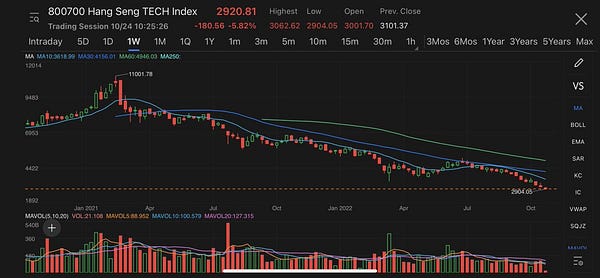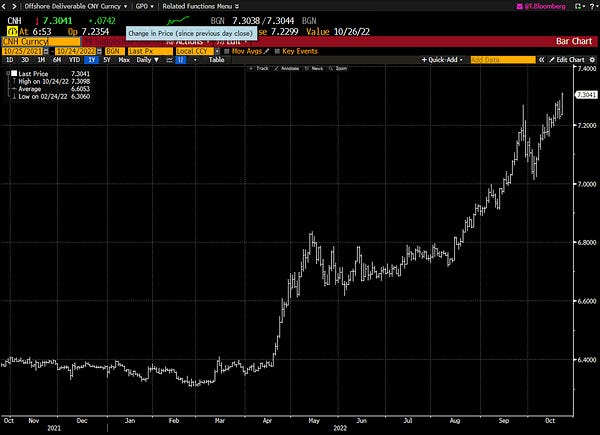The best opportunities for asymmetric returns come when pretty much everyone hates the investment. When it elicits a negative emotional response. Something that borders on disgust. I made 9x my investment in energy when people thought it was a dinosaur industry that would become imminently irrelevant.
Can you think of anything more “uninvestable” right now than China after Xi’s historic power grab?
Howard Marks said on an interview that “in the real world, things tend to fluctuate between pretty good and not so hot. In market psychology, it swings from flawless to hopeless.” Based on today’s market reaction, it looks very much like everyone is heading for the exit.





That makes it that much more enticing for me.
Don’t get me wrong. China definitely has issues. There are risks. As with any investments. There could be additional sanctions. The Taiwan issue can escalate. But what if the worse case scenarios don’t eventuate? There’s so much negativity being priced into the shares that it would moon. Also remember that China is not going to stay in lockdown forever… Eventually they will open back up and that will have implications for energy and metals.
I’m staying away from ADRs and will accumulate until it gets to around 5% of my portfolio.
Q3 Investment Reports
Whether we are in a recession or not, it’s clear that the Fed wants to deflate the stock market.
After Chair Powell’s speech in Jackson Hole, one Fed governor said he “was actually happy” with the stock market’s negative reaction. Again, strange times.
It seems the Fed believes that inflation is caused by a difference between supply and demand. If this were the case, there would be two possible approaches: try to increase supply or to try to decrease demand. To increase supply, we would need productive investment. This would add to wealth and improve living standards. To decrease demand, we would reduce income and wealth, thereby lowering living standards. Our policy makers, who have delegated inflation fighting to the Fed, have chosen the latter. There is no discussion about how to increase supply. In fact, higher interest rates reduce investment, and therefore, supply. The most glaring area might be in housing, where higher rates lead to reduced supply despite widespread shortage. All told, this policy might make inflation worse rather than better. As we wrote a decade ago in our Jelly Donut monetary policy thesis, the relationship between interest rates and the economy is non-linear; the Fed does not appear to understand this. Again, very strange times.
Of course, we believe that inflation is only partly caused by a difference between supply and demand. It’s also caused by the creation of money. We just went through a period where we had aggressive fiscal policy financed by newly created money. Unfortunately, fiscal reform is not on the table at this point. Chair Powell has determined that “price stability is the responsibility of the Federal Reserve.” Implicitly, fiscal policy does not need to help the inflation fight. In fact, it appears to be used to offset the monetary policy, as there doesn’t seem to be any objection to additional spending that effectively subsidizes the inflation.
Bridgewater:
Keep reading with a 7-day free trial
Subscribe to Upgraded Brain to keep reading this post and get 7 days of free access to the full post archives.
